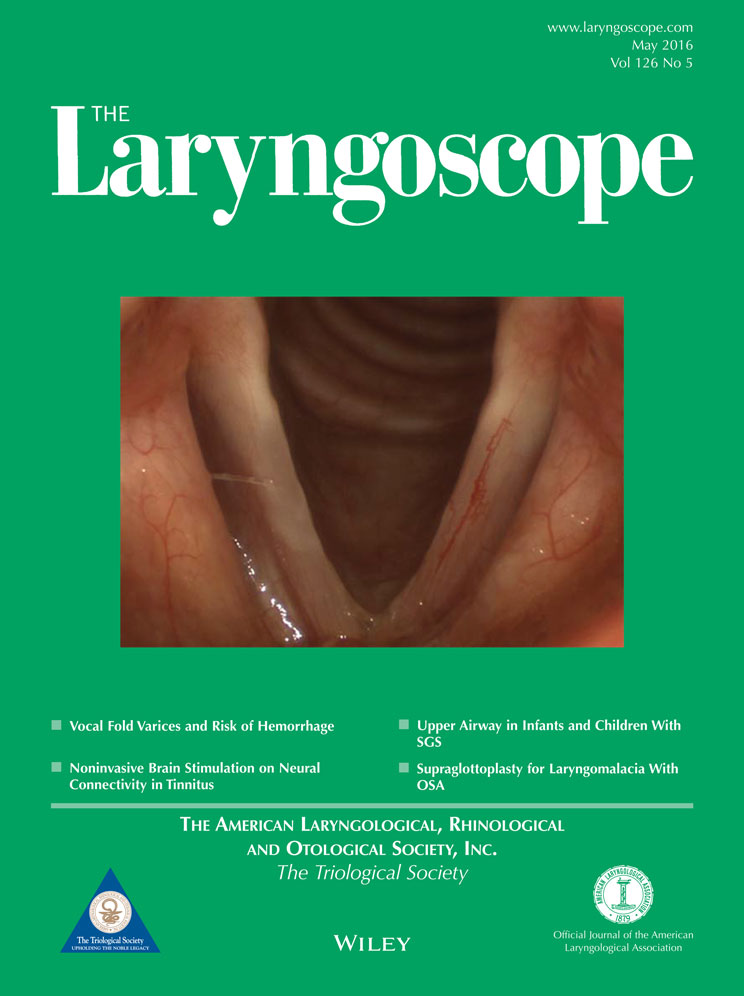Basal cell adenocarcinoma of the major salivary glands: A population-level study of 509 cases
The authors have no funding, financial relationships, or conflicts of interest to disclose.
Abstract
Objectives/Hypothesis
We sought to better characterize patient, tumor, and long-term survival characteristics of basal cell adenocarcinoma (BCAC) of the major salivary glands with the National Cancer Database (NCDB).
Study Design
Retrospective database review of the NCDB (1998–2012).
Methods
We retrospectively reviewed the NCDB for all cases of major salivary gland BCAC with histologic code 8147/3. Relevant demographic, tumor, and survival variables were extracted and analyzed. COX multivariate regression was performed to identify prognosticators.
Results
Out of 36,224 major salivary gland cancers in the NCDB, we found 509 cases of BCAC (1.4%), 88% of which were in the parotid glands, 11.2% in the submandibular glands, and 0.8% in the sublingual glands. Age at diagnosis ranged from 18 to 92 years (average 64). No gender preference was found (50.7% male). Most tumors were 2 to 4 cm in size (47.3%). Regional (11.9%) and distant metastasis (1.8%) were uncommon. Overall survival at 5 and 10 years was 79% and 62%, respectively. Although numerous variables were found to significantly impact survival on univariate regression analysis, only age ≥ 65 (hazard ratio [HR] 2.55; 95% confidence interval [CI], 1.56–4.19; P < 0.001) and high primary tumor (T)-stage (HR 1.85; 95% CI, 1.16–2.95; P = 0.010) remained significant prognosticators in our multivariate model. For high T-stage disease, surgery with radiation had significantly better survival than surgery alone.
Conclusion
Basal cell adenocarcinoma is a rare salivary malignancy with a good prognosis. Regional and distant metastasis were uncommon. Radiation with surgery may help for higher T-stage disease. Old age and high T-stage were significant predictors of worse survival.
Level of Evidence
4. Laryngoscope, 126:1086–1090, 2016




